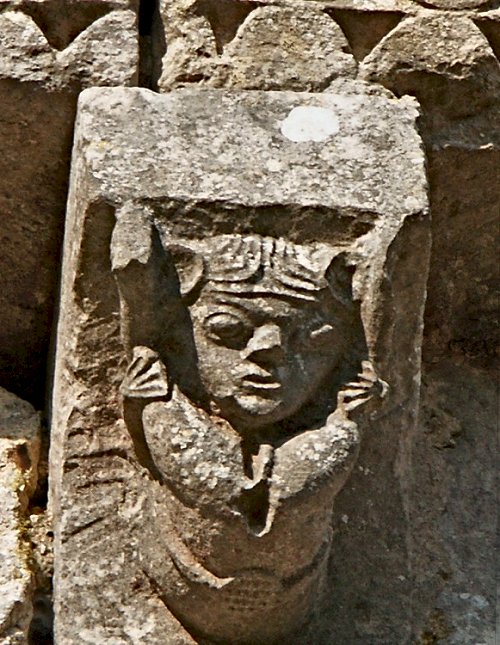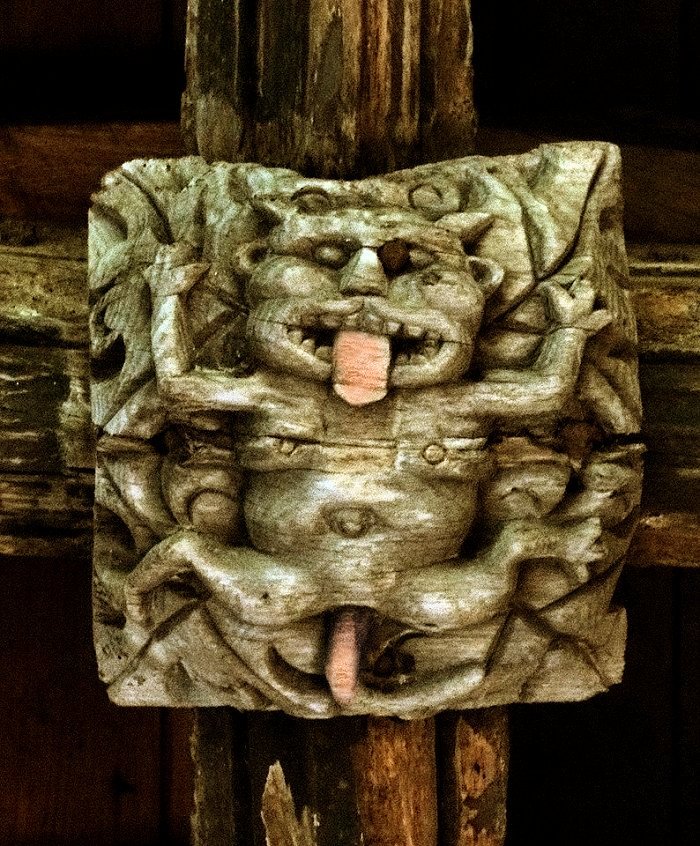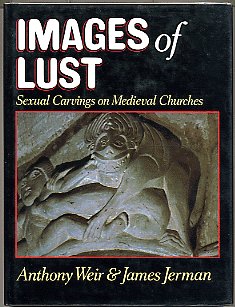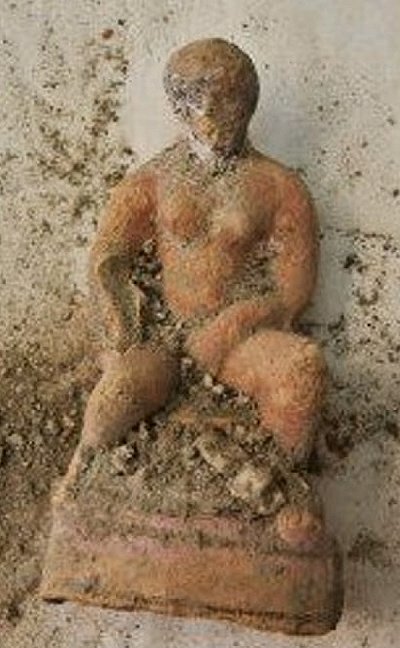SUMMARY
IN SIX BULLET-POINTS
1. The
strange and sticky, off-the-cuff name might well have been pronounced
sheela-na-JIG
- like thingumajig.
There is no letter J in Irish.
It was originally spelled sheela-ny-ghigg, with a diacritical
dot above the g.

Several of them are dancing.
All of them are flashers.
A jig was considered to be a vulgar, rustic English dance, possibly
outrageous.
"It may be hard for us to conceive of the conclusion of Shakespeare's
Romeo and Juliet
– with the image of the dead lovers fresh in our minds –
immediately followed by a bawdy song and dance, but Elizabethan
audiences demanded it."
(Shapiro, '1599').
2.
There are more of them in Britain than in Ireland.
3.
They are almost all to be found on churches.
4.
They are
a genre of European exhibitionist sculpture which first emerged
in France in the eleventh century,
and which are of two distinct kinds that can be divided absolutely
by date: Romanesque and Post-Romanesque :
the Romanesque
examples are essentially one element of a regular repertoire
of sculptures
condemning acrobats and musicians and 'vulgar' or 'lewd' entertainers
perceived to be in opposition
to and in competition with the solemn rites and rituals of the Church;
the post-Romanesque
ones, at least 200 years later, are, for the most part, magical,
apotropaic
figures (possibly based on a misunderstanding of the earlier sculptures)
intended to ward off Evil.
5.
There are more male
exhibitionists than female,
especially in France.
6.
Their function and significance varied according to place and time,
but they have nothing to do with either esoteric cults or any version
of modern Feminism.
sommaire  fran�ais
fran�ais
For
a fine miscellany of mediæval exhibitionists,
male and female, on one FlickR page, click
here.
NOW
READ ON
I first came across these strange and often crude figures in 1973,
while following E.E. Evans' pioneering Prehistoric and Early
Christian Ireland - A Guide (1966).
For forty years I researched them in the field, in the bowels of
the National Museum of Ireland
(where they were hidden out of Christian sight)
in museums at Drogheda and Athlone, in storehouses in Cardiff and
Limerick,
on Irish castles and, most importantly,
on churches in England, France, Spain, Italy and Portugal.
Much of my research
was carried out before the days of Internet or cellphone.
Now, one can find hundreds of examples of male and female exhibitionists
by googling intelligently – e.g. "arte erotico romanico",
or going to specialist groups on FlickR etc.
https://www.flickr.com/groups/canecillos/pool/
This is the first
one I saw, in 1973, at Rath Blathmaic in County Clare,
on a Romanesque (12th century) window-sill
inserted upside-down into the wall of a later church.
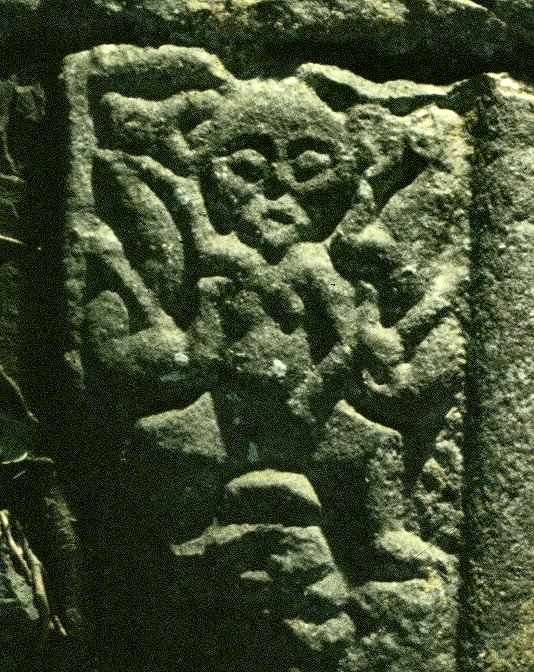
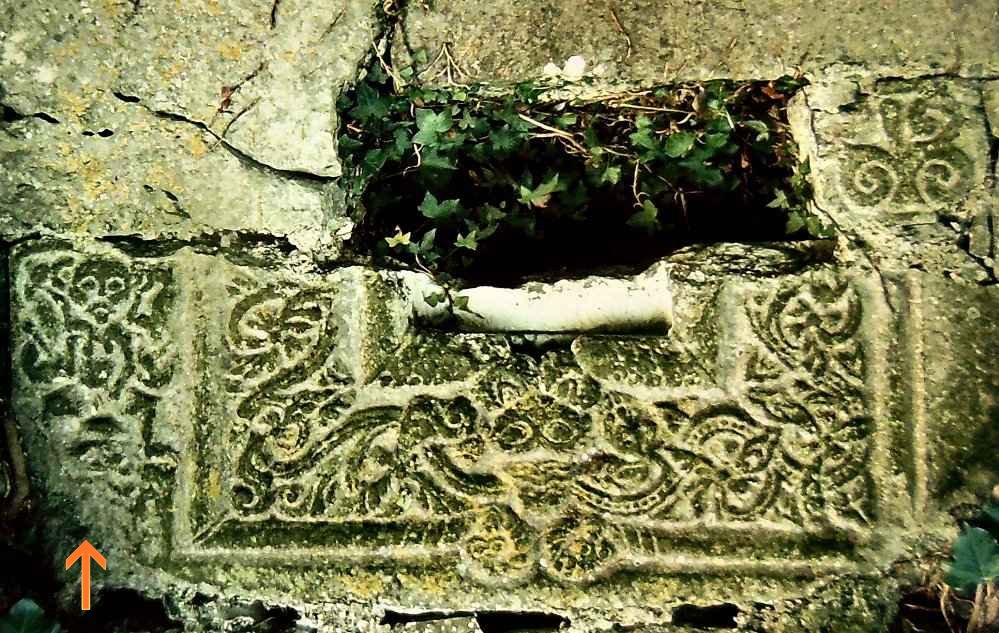
The impression given
by this carving is that the exhibitionist figure,
assailed by evilly-whispering beasts with Scandinavian connections,
is an adjunct, an add-on, a side-show.
And so these carvings were, until, after the Black Death and other
events,
they became lone, forlorn figures...
...like the next one I saw, not far away, the better-known, crudely-carved
roadside figure at Killinaboy.
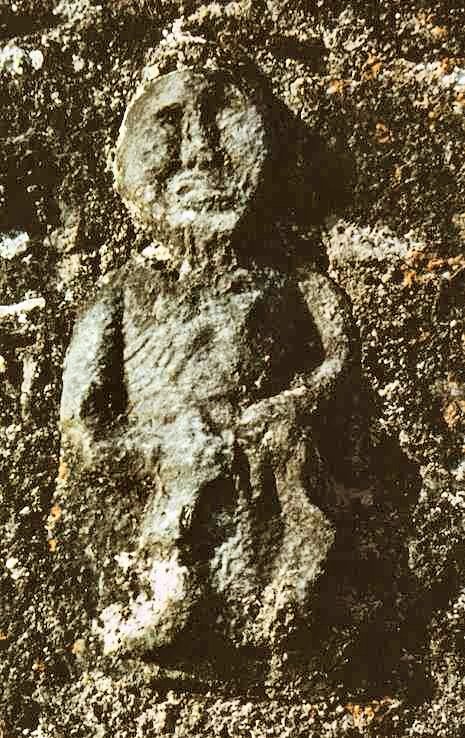
I have never had
a very good camera.
It wasn't until I
saw two fine low-relief carvings in county Tipperary (equipped with
a better camera)
that my interest was sufficiently aroused to pursue their origins
and significance.
This quoin-carving, at Ballyfinboy Castle, was mentioned in the
Ordnance Survey Letters of 1840...
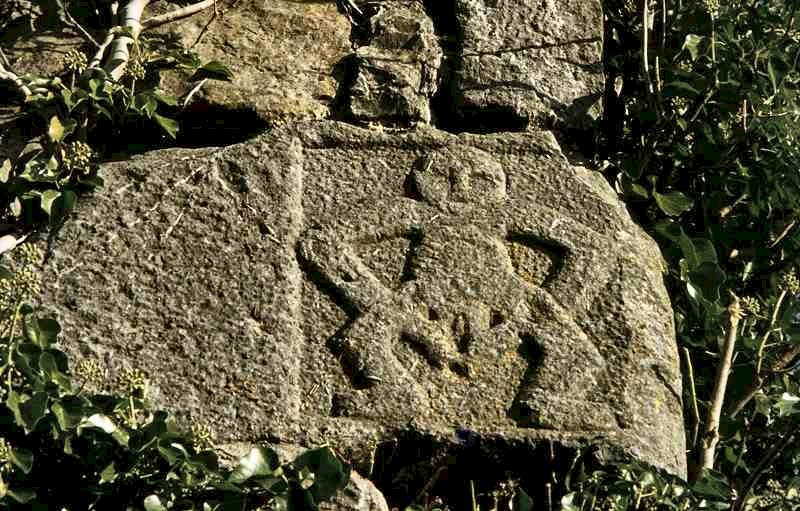
as was this one, in
another part of Tipperary, dancing on a quoin of the ruined church
at Kiltinan[e].
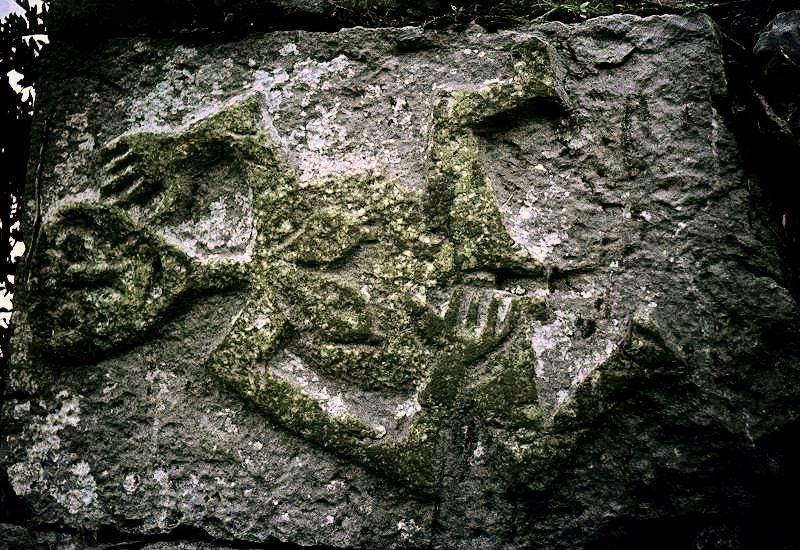
It was not far away from Kiltinan[e] that the name arose in the
mid-19th century, when a local man
was reportedly asked about a 'lewd figure' on a ruined church at
Rochestown.
His mumbled reply to the antiquarian was recorded as: It's just
an oul' sheela-na-gig.
He might equally have said: It's just an oul' thingumajig.
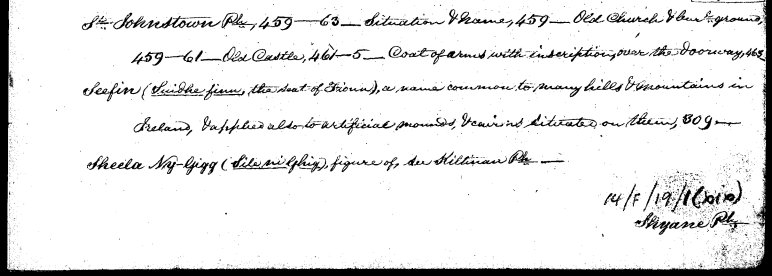
part of an index
to John O'Donovan's Ordnance Survey Letters concerning county
Tipperary.
the first recorded mention of a "Sheela Ny-Gigg
(Sile ni Ghig)" - at Kiltinane.

There has been a bizarre, unscholarly and nationalistic reluctance
on the part of those who have become familiar with the term
sheela-na-gig (or sheila-na-gig) to even mention the hundreds
of preceding figures in Europe
as far east as Hungary, as far north as Norway and as far south
as Sicily - and beyond to Jerusalem.
None of those who
have pretended scholarship in books or Wikipedia or the Encyclopaedia
Britannica
has bothered to go to France where the first such figures were carved,
let alone Spain or Corsica.
Nor have they properly examined the link between sheela predecessors
and the motifs of Luxuria
and Terra.
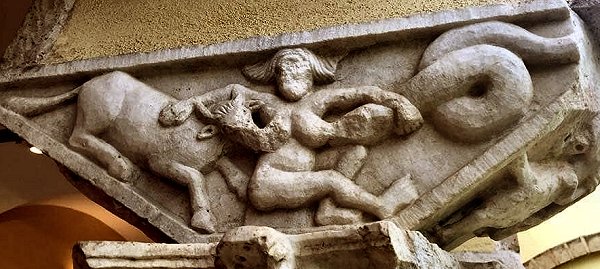
Nearly fifty years
later and over three decades after publishing a book on the subject,
I have created this website,
based on my doctoral thesis..
It is in two main
parts :
There are also lists
according to country and period :
NOTE : Some of the links on these pages may no longer
function : websites can disappear overnight.
